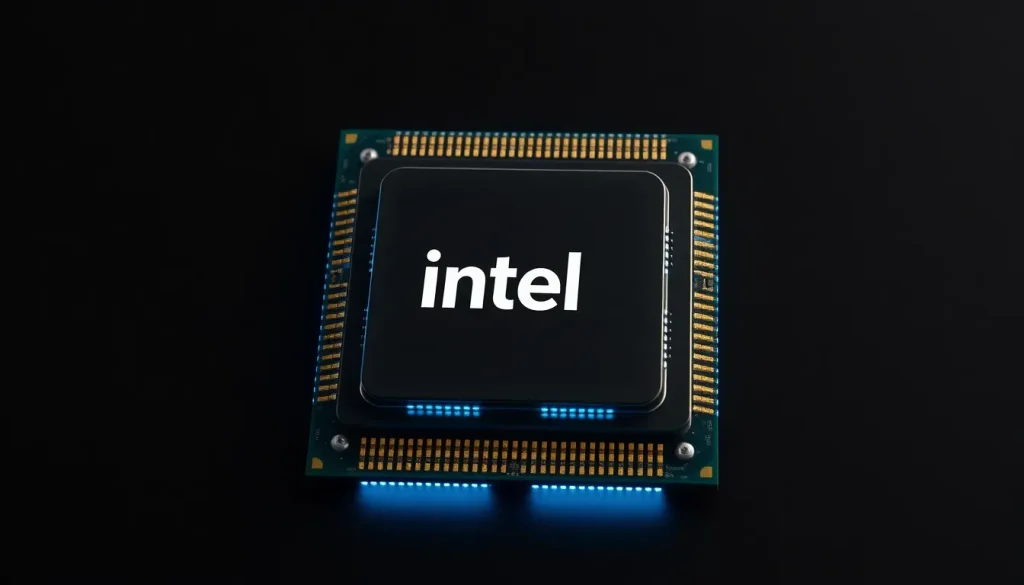New Intel CPU with 12 P-Cores and 6GHz Clock Speed Coming Soon

Intel is on the verge of launching a new CPU that promises to shake up the market with its impressive specifications. With reports indicating a configuration of 12 P-Cores and a staggering clock speed of up to 6GHz, the upcoming Bartlett Lake-S desktop processors are generating a lot of buzz. Let's dive deeper into what we know about this new release and what it might mean for consumers and professionals alike.
Overview of the Intel 14th Gen CPUs
The forthcoming Intel 14th Generation CPUs will be utilizing the LGA1700 socket, the same architecture that supports Intel’s previous Raptor Lake series. This backward compatibility is crucial for users looking to upgrade their processors without needing a new motherboard. The 14th Gen series will mark a significant evolution in Intel's CPU designs, particularly with the introduction of the Bartlett Lake models.
Unlike previous iterations, these new chips will exclusively feature Performance Cores (P-Cores) and will not include Energy Efficient Cores (E-Cores). This design choice suggests a targeted approach aimed at maximizing performance in intensive tasks, particularly gaming and heavy computational workloads.
Key Specifications of Bartlett Lake-S
According to leaks from reputable sources, the flagship model of the Bartlett Lake-S series will sport:
- 12 P-Cores: This configuration is unprecedented for Intel desktop processors, which have historically maxed out at eight P-Cores in their hybrid architectures.
- 6GHz Boost Clock Speed: The potential for reaching clock speeds of 6GHz represents a major step forward in processing capabilities.
- 5.5GHz All-Core Boost: This ensures that even under heavy load, the CPU can maintain high performance.
- 3.4GHz Base Frequency: A solid base frequency for everyday tasks and operations.
- 125W TDP: This thermal design power suggests that the chip can operate efficiently without requiring advanced cooling solutions.
Impact of P-Core Configuration
The decision to forgo E-Cores in favor of increasing P-Cores is a strategic one. E-Cores are designed to handle background tasks efficiently, while P-Cores deliver maximum performance for demanding applications. This could mean that the Bartlett Lake-S chips will excel particularly in:
- Gaming Performance: With more P-Cores, the CPU could handle more game threads simultaneously, improving overall gaming experience.
- Content Creation: Tasks such as video editing and 3D rendering could see substantial benefits from the increased core count.
- Multitasking Scenarios: Users running multiple applications can experience smoother performance without the need for E-Cores.
Overclocking Potential and Limitations
One of the noteworthy aspects surrounding the Bartlett Lake-S CPUs is the prospect of overclocking. However, the latest leaks indicate that the 12 P-Core model may not be unlocked for overclocking via its multiplier. Instead, users might have limited overclocking capabilities by adjusting the base clock. This could lead to instability issues, dissuading many from attempting these tweaks.
Nevertheless, with a base clock speed already reaching 6GHz, the need for overclocking may be diminished. This is a significant advantage over existing models, such as the Core Ultra 9 285K, which also aims for high performance.
Memory and Connectivity Features
The Bartlett Lake-S processors are set to support advanced memory and connectivity standards. Key features include:
- DDR5-5600 Memory Support: This high-speed RAM standard will enhance overall performance, especially in memory-intensive applications.
- DDR4-3200 Compatibility: Some models may still support the previous DDR4 standard, offering flexibility.
- PCIe 5.0 and PCIe 4.0 Lanes: The CPUs will provide up to 16 PCIe 5.0 lanes and 4 PCIe 4.0 lanes, allowing for faster data transfer rates and improved GPU performance.
- Integrated Xe GPU: Featuring 32 execution units, this integrated graphics solution offers decent graphics performance for casual gaming and productivity tasks.
Potential Applications and Market Positioning
Interestingly, Intel's documentation suggests that the Bartlett Lake-S series is aimed primarily at edge computing applications rather than traditional gaming. This could mean that while they excel in performance, their intended use cases might differ from what many gamers expect.
As a result, it remains to be seen how these CPUs will perform in gaming scenarios against their counterparts from the Arrow Lake-S series, which might retain the E-Core advantage for multi-threaded tasks. However, the Bartlett Lake-S could dominate in environments where performance per core is paramount.
Release Timeline and Expectations
Intel is expected to unveil the Bartlett Lake-S CPUs before the end of 2025. This timeline suggests that consumers should keep an eye on upcoming announcements, as the technology landscape can quickly evolve with new challenges and innovations.
For those eager to stay informed on the latest developments, following the Google News feed from Club386 could provide timely updates on the release and performance benchmarks of these new processors.
For a deeper understanding of the potential impact of the upcoming CPUs, you can check out this related video:
As the competitive landscape of CPUs heats up, Intel's innovations in the Bartlett Lake-S series will be essential to watch, especially with rivals like AMD pushing boundaries in clock speeds and core counts. The gaming and tech communities are eagerly awaiting the performance metrics that these new processors will bring to the table.



Leave a Reply